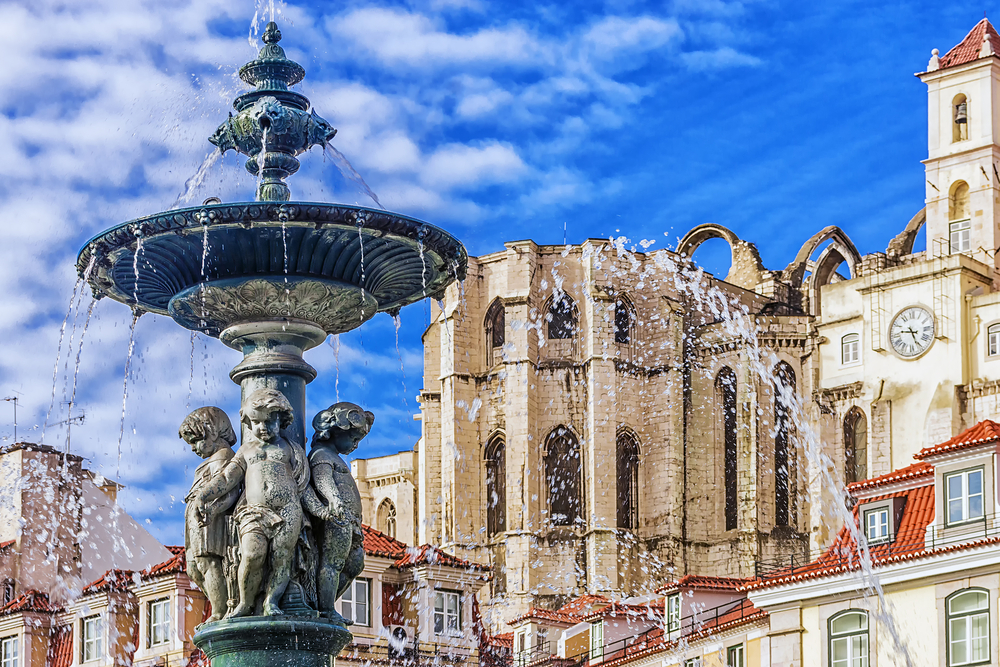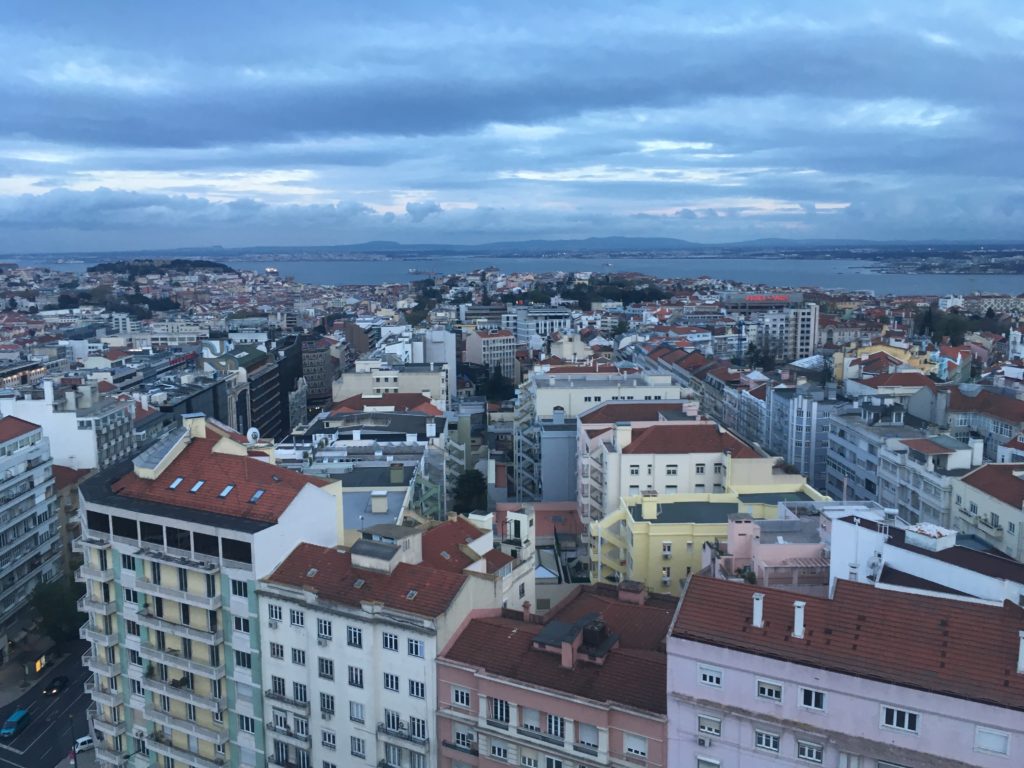One of my favorite cities is Lisbon, Portugal. Whether you’re an accomplished traveler or a first-timer to the Iberian Peninsula, Lisbon has a captivating charm.
Why is Lisbon so special? It has to do with a sense of history that surrounds the city. You might say that history is ever present!
When you first lay eyes on the port of Lisbon in particular, you are breathing the same air and seeing the same sparkling water as the Portuguese explorers did more than 500 years ago. In Lisbon you are living life in the footsteps of the great navigators!
Read on to learn more about the culture, food, and history of Lisbon, its legacy in world exploration, and how it has evolved into a prosperous modern city.

Breaking It Down:
Lisbon: Yesterday and Today
Lisbon, Portugal has an illustrious history. It is the oldest city in Western Europe, and one of the oldest cities in the world. It is located on the Tagus River estuary—a vast port. With a little imagination, you can see what it must have looked like hundreds of years ago, in the prime age of world exploration and the quest to map sea routes across the globe.
Even the name “Lisbon” has a fascinating story.
Some claim the word comes from the legacy of Ulysses (the hero of Homer’s Odyssey), while others attribute the namesake to “Elisha,” a grandson of Abraham, the Hebrew patriarch. Still others say the city was named after Phoenician colonists.
Make Sure YOU Don’t Waste Money by Overpaying for Hotel Rooms!
More than 2.5 million people live in Lisbon, Portugal today. That accounts for about a quarter of the country’s population.
Lisbon is a city built on a series of terraces, with neighborhoods spanning seven hillsides. Geography shapes architecture: apartments line the steep streets, walls made of colorful tile. “Lisboetas” enjoy gorgeous terrace views of the sparkling bay in the distance.
The Evolution of Lisbon, Portugal
Historians believe that Lisbon was established around 1200 BCE as a trade station by the Phoenicians. The Roman empire spread to Portugal in 205 BCE to 409 CE, and Julius Caesar is thought to have lived there. Archeologists have found further evidence of Roman artifacts in the area.
The Moors of North Africa dominated Lisbon when they took over Iberia in the 700s. They remained in the area for more than 400 years, surviving Norman and Spanish invasions. By 1147, Lisbon came under the control of the Portuguese king Alfonso I. It took another century (1256) before Lisbon was declared the national capital.
Here’s another fun fact: the University of Lisbon was founded in 1288.
Early Lisbon was a wealthy city with a strong Catholic presence. Much of the city’s wealth came from its role as a trade center. Slaves from Africa were one of its prime commodities.
The age of discovery began in 1498 when the famous Vasco da Gama sailed to India. This successful voyage put Lisbon on the map, so to speak. Other trade colonies soon established their centers in Lisbon. These included colonies of English, French, German, Dutch, and Flemish traders.
Lisbon: A Legacy of Discovery
Back in the 15th century, Lisbon was the hub of Portuguese exploration. Why sail the seas? It’s an age-old question, with perhaps an obvious answer (to see what’s on the other side of the globe!).
But the Portuguese had several good reasons. They wanted to:
- Discover trade routes
- Establish their reputation in the world
- Spread Catholicism
- Learn more about the world!
Nautical science can thank the Portuguese for many progressive discoveries and advancements. In their quest to create trade routes with colonies across the seas, they applied a scientific approach to navigation, combining observation with mapping. They made (and chronicled) systematic journeys, mapping and documenting as they went. The Portuguese were the first to use a mathematical formula to determine the curve of the earth.
Successful seafaring required trained cartographers, mathematicians, astronomers, and navigators. In the 1500s, one notable Portuguese was João de Catro, who taught the world how to measure the angle between magnetic north and true north. Another was Pedro Nunes, who taught us how to determine latitude using the stars to guide us.
The Portuguese navigators built on earlier Arab tools such as the quadrant and astrolabe. They created the cross-staff, which allowed them to measure the height of the sun and stars.
The Portuguese also developed astronomical tables that allowed navigators to more easily calculate and predict their latitude. The Portuguese were also master cartographers. They created one of the first world atlases.
The Portuguese also mastered the art of ship design and construction.
In the mid-15th century, a ship called a caravel was developed. It used wind power more effectively than any craft before it. The caravel was also sturdier than earlier vessels. It was agile, had a bigger storage area, and was easier to navigate. Larger ships were developed in the 1500s with much greater capacity to carry supplies (and haul back treasures). The ships of the 16th century had two decks, two to four masts, and several sails.
The Portuguese didn’t just sail for treasure and glory. They also traveled the seas in order to gather oceanographic and meteorological information. They charted wind and current patterns that other explorers could learn from.
Five Portuguese Movers and Splashers
Did you know that Portuguese explorers were responsible for discovering more than 70% of the new world? Astonishing fact!
Portugal was too small as a country to actually claim and colonize most of these lands. They couldn’t defend their conquests against the more powerful European countries like England and Spain. Nevertheless, they have left humanity their legacy of discovery, including immense territories like Australia, Newfoundland, and Greenland.
Here are five of the most important Portuguese explorers.
Vasco de Gama: 1468-1524. He commanded some of the first ships that sailed to India from Europe. In 1497 he sailed from Lisbon, followed the Cape of Good Hope, and landed on the east coast of Africa. From there he crossed the Indian Ocean, arriving to a hostile response in Calicut. He also served as Viceroy to Portugal.
Pedro Álvares Cabral: 1467-1520. He is credited with discovering Brazil (or at least being the first European to arrive there). After Vasco de Gama’s successful but dangerous voyage to India, the king of Portugal decided to send reinforcements to wage war in India and defend the newly discovered trade routes. He sent Cabral with 1200 men in 13 ships.
The only problem was that Cabral didn’t actually end up in India: they took a westward turn and encountered Brazil in 1500. This turned out to be an even better conquest, since the Brazilian coast was essential to maintain the safety of the Indian trade route, and Brazil was a rich and bountiful land that Portugal exploited for centuries.
Ferdinand Magellan: 1480-1521. In 1519 he attempted to sail a fleet of five ships to find the western path to the Spice Islands. On the way he discovered what we call today the Strait of Magellan, becoming the first European to transverse the Pacific. Three years after the start of his journey, only one ship of five returned to Portugal, with 18 survivors from the original 270 he left with.
Christopher Columbus: 1451-1506. Well, we’ll call him an honorary Portuguese because he lived there for a long time. Columbus is actually Italian. He sailed four major voyages between 1492 and 1503, starting off the coast of Spain and sailing to North and South America. When he made that famous crossing of the Ocean Blue in 1492, he thought he was seeing India (but he was closer to Indiana).
Diogo Cão is a fifth explorer who influenced Portuguese discovery of the world back in the 15th century. He is known as an innovative navigator, and his voyages helped chart the way from Europe to Africa. Cão led his team to Zaire, the Congo, and Namibia. He is also known for introducing the use of stone patterns (rather than wooden crosses) to show Portuguese presence in the areas conquered.
The Emergence of Modern Lisbon
From 1495-1521, King Manuel I ruled the land, funding many of the expeditions to travel the seas and discover the world. He is responsible for bringing European architecture to Lisbon. He also helped urbanize Lisbon, creating residential and business districts. The next king, John III, made Lisbon a headquarters for the Inquisition. This led to the banishment of the Jews of Portugal, who had assisted with banking and finance.
By 1580, Spain pushed its way into Portugal and Phillip II ruled both Spain and Portugal. It was from Lisbon, Portugal in 1588 that the Armada sailed against England. Portugal gained independence from Spain in 1640. A strong alliance with England followed, which helped Portugal foster its trading industry and other businesses.
In 1755 three enormous jolts shook the city for 10 minutes. The earthquake is thought to be one of the strongest recorded. A tsunami followed the initial quake, followed by fires that lasted for days. More than 60,000 people died, and 12,000 buildings were destroyed.
The re-construction of Lisbon, engineered by Manuel da Maia and five architects, created a “new and improved” city with a well-designed city grid, uniform architecture, and a new commerce square.
Through the 19th century, Lisbon was invaded by the French (Napolean came in 1807) and the British. Yet Lisbon kept growing, and modernizing. City architects constructed public buildings, roads, city hall, and a royal palace.
It’s no surprise that Lisbon, Portugal has depended for centuries on the fishing industry. But today it is a thriving, modern metropolitan area, with a diversification of industries. These range from technology, pharmaceuticals, as well as heavy industry like shipbuilding and oil refining. And tourism, of course, has also been a boon to the economy!
Lisbon: The Cultural Capital
As for the culture of Lisbon, part of what makes it so unique is the blend of old and new. It is modern, but still has the sense of a 19th century city. Fishing boats still auction their catch first thing in the morning. The trolley cars crawl up and down the steep streets as they have for decades.
The city is a kaleidoscope of European styles, with traces of Italian, French, and Spanish architecture. While Portugal is a predominantly Catholic country and there are many churches, Lisboetas tend to celebrate saint days and other holidays with dancing and bonfires at night.
It is also worth noting that Lisbon has an extremely literate population, with book stories, libraries, and cultural centers. There is national ballet and music companies and theaters, as well as other fine arts. Museums include modern art, folk art, religious art, and let’s not leave out the Museum of Coaches.
Apparently, cultural life in Lisbon got a boost as the city hosted the World’s Fair in the 1990s. A dynamic immigrant population also adds to the diversity of Lisbon (mainly people from Africa, Brazil, and eastern European countries).
Yet for all the pros of living in Lisbon—these beautiful vistas and lovely temperate weather, for example—apparently residents suffer from a level of anxiety or melancholy reflected in their haunting folk music called fado. This unique form of Portuguese music is prevalent in restaurants and bars in the historic Bairro Alto and Alfama neighborhoods of Lisbon.

Lisbon’s colorful cityscape is bright even in the cloudy spring weather. Portugal’s climate is temperate, but can be windy and rainy at times.
Lisbon, Portugal Neighborhoods: Alfama, Bairro Alto, Belem
To illustrate how the historic blends with the modern, consider a few neighborhoods you might want to visit in Lisbon, starting with Alfama. This is one of the oldest neighborhoods in the city, deriving its name from the Arabic for “Hot Spring.” It reveals a combination of Moorish and Roman architecture.
The narrow streets crowd maze-like down the hillside and toward the river. Alfama is where Lisbon was first founded, with the Castelo of São Jorge towering over the city. Although the castle is Moorish in origin, its name came from the patron saint of Britain. This was to commemorate an alliance between Portugal and England in 1386.
Bairro Alto or Upper District is another historic neighborhood with its own distinct character. It is more modern than Alfama, dating back to the 16th century. Dizzying streets spiral down the hillside, sometimes ending abruptly in an alley. Lisbon city planners addressed the transportation issues by creating numerous stairways, cable car lines, and even a famous elevator called the Santa Justa Lift.
Belém is another notable neighborhood, famous for the Belém Palace (occupied by the president of the republic). The Tower of Belém is a UNESCO World Heritage site. Belém is located on the bay, and reflects more of Portugal’s maritime history. It is also known for the Jerónimos Monsastery, built according to the Manueline architecture style of the 1500s.
Lisbon, Portugal: Food, Glorious Food
You don’t hear much about Portuguese cuisine; it doesn’t stack up with the famous reputation of the French, Italian, or Spanish food. But in my opinion, it ranks high up there!
With its proximity to the water, you can imagine that seafood is a specialty. Cervejarias (ceviche) and other shellfish is easy to find throughout the city. One popular and delicious dish is bacalhau, cod that is prepared in a number of ways, including fried. Sardinhas assadas are grilled sardines. Prawns and octopus are also native dishes you’ll find in Lisbon.
Restaurants in Lisbon range from cheap to expensive, but I was impressed with the multitude of affordable family restaurants that all sold simple fish or meat dishes, complete with copious fried potatoes.
Lisbon, and Portugal in general, is also known for excellent wine, and of course, port.
As for the dessert category, Lisbon, Portugal offers a range of delicious and inexpensive pastries. I’ve saved the best for last.
Final Thoughts: Pastel de Nata
Normally I wouldn’t conclude with a simple tart in an article of a city’s history.
However, the pasteis de nata is no ordinary pastry!
On first impression, it is a tasty looking confection, an egg custard baked in a flaky pastry.

Mil Folhas
But take one bite and you are filling your mouth with the delicious history of Lisbon. Just think—for over 300 years Lisboetes have been enjoying this special dessert (and swooning over its tastiness, just as you will too when you eat your first pastel de nata).
The story goes like this. Back in the 1800’s, Jerónimos Monastery in west Lisbon (the Belém neighborhood) was a bustling parish in a growing city. Thousands of monks and nuns lived and worked in the monastery.
But they had a problem: a laundry detergent shortage. Therefore, they used egg whites to keep their clothes starched and stiff. This left a multitude of leftover egg yolks. To keep them from going to waste, they were used in desserts (like custard).
The monks developed a secret recipe for delicious custard, and sold the tarts to help support the monastery. The monastery closed in 1834, but the Fábrica de Pastéis de Belém took over the recipe, and still sells this dessert today. In fact, many bakeries and restaurants offer up their own version of pastel de nata.
I hope you’ll check out this historic pastry when you visit Lisbon. Remember that the best ones are creamy and custardy inside, with caramelized topping. Some bakeries tend to make them a bit too greasy or soggy. They are especially delicious with a cappuccino or espresso.
Bom apetite!
Related Articles:
- What if you could learn everything you need to know about your destination in just 15 minutes? Here’s how!
- When I book award tickets for my international travels, I always rely on Point.me. They make sure I’m not wasting my miles and points.
- I Always Get the Lowest Prices on Hotel Rooms: Here’s How!
- My Favorite Travel Resources and Products
- 9 Awesome Travel Accessories To Pack for Your Next Trip
- Use Google Flights to Get the Cheapest Fares
The responses below are not provided or commissioned by the bank advertiser. Responses have not been reviewed, approved or otherwise endorsed by the bank advertiser. It is not the bank advertiser's responsibility to ensure all posts and/or questions are answered.
3 comments
[…] Read more @ pointmetotheplane.boardingarea.com […]
[…] Read More […]
[…] This was published by BoardingArea, to read the complete post please visit https://pointmetotheplane.boardingarea.com/lisbon-portugal-visit/. […]